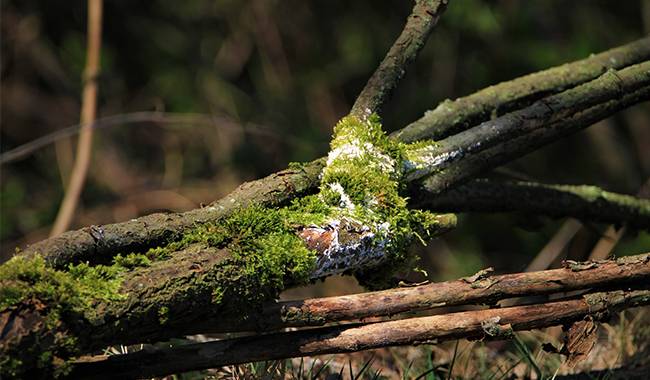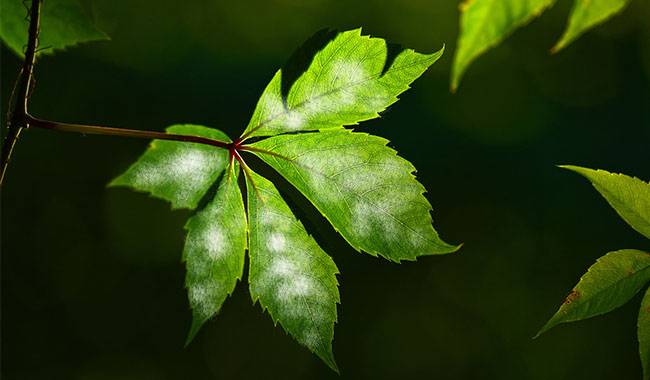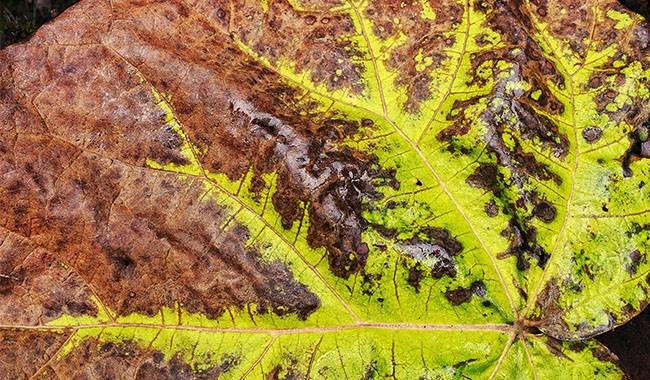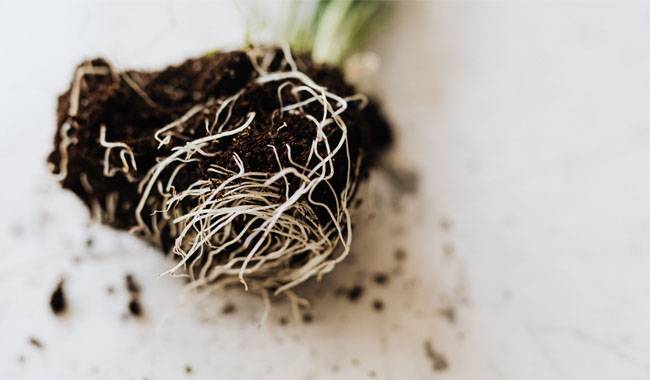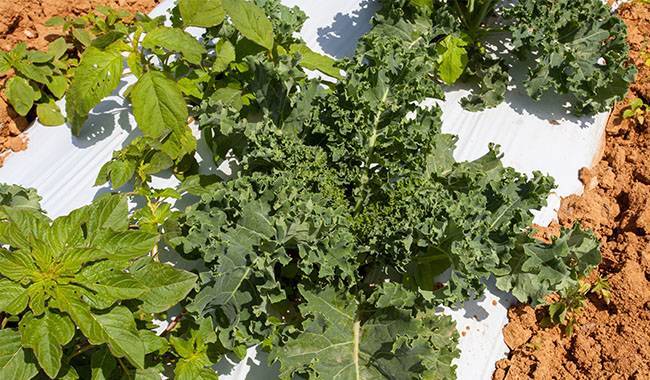
Although the characteristic sound of sprayers at work can be heard in these areas throughout the spring and summer, the year-round care that large estate owners provide to protect their gardens and vegetable gardens from disease does not always yield the desired results. Particularly dangerous diseases can destroy large areas of vegetable and horticultural crops.
To combat infectious diseases of plants – infectious plants – modern chemistry and the pharmaceutical industry have developed many chemical and biological products that can destroy or greatly reduce the number and severity of diseases. However, the most important thing for effective control of plant diseases is the early and accurate identification of the type of disease.
Infectious plant diseases are caused by infections that can infect, for example, fauna and spread disease among plants. Infections may be present in the soil, air, and water and spread rapidly to healthy plants under favorable conditions.
Infectious plant diseases can be divided into the following categories.
- Fungal.
- Bacterial.
- Viruses.
FUNGAL PLANT DISEASES
Fungal diseases are caused by different groups of pathogenic fungi. In terms of species composition, fungal plant diseases are the most common among plant pathogenic infections. The most dangerous and common fungi, according to their negative impact on plants, are Phytophthora, Blackleg, decay of plant roots and vegetative systems, Verticillosis, Fusarium, Powdery mildew (false and true).
Late blight fungus
Late blight fungus is one of the most widespread plant diseases. It is spread by fungal spores, which attack plants or enter the soil during rainfall, watering, and wind damage.
Damage levels of Late blight fungus
Late blight fungus is particularly dangerous because it can infect vegetable and other garden plants, woody and shrub fruit, and berry crops. The infection penetrates underground organs (root systems, tubers, bulbs, rhizomes). From the above-ground, it affects leaves, flowers, stems, ovaries, and fruits. Eggplants, bell peppers, tomatoes, strawberries/strawberries, potatoes, apple trees, indoor and greenhouse plants, and other crops are particularly affected by the fungus.
The appearance of Late blight fungus
Late blight fungus manifests itself in the latter part of summer and spreads very rapidly in humid, rainy weather at temperatures of 75-80°F (24-27°C). Brown or gray-green spots appear on leaves and young shoots. Some are initially surrounded by a ring of white cobwebs but later become completely covered with cobwebs.
The spots merge, increasing the area affected. Leaf wilting and shedding (leading to subsequent infestation). Herbaceous crops die and, in woody shrubs, the fruit becomes unfit for consumption, processing, storage, and transport.
Rot
All types of rots damage, mainly vegetables and other vegetable plants, seedlings of some fruit crops, and berries (blackleg, whiteleg, gray leg, brown leg, hard boils, carrion, and stem rot). There is no effective treatment for almost all rots. Diseased plants are removed from the site and burned.
External symptoms of plant rot
- Sparse seedling stems (black stems).
- In brown rot, the root neck of the plant becomes soft and turns brown, and later turns black.
- When white rot affects root crops, the tissues soften and turn mucilaginous, and the root crops are covered with white patches.
- Hard rot forms brownish-purple spots with black spots on the leaves. The middle of the spots is lighter than the edges. The spots merge into a gray affected area on the leaves.
- Gray rot affects all above-ground organs of the plant, which are covered with gray fuzz that turns brown and sticky.
- Fungal scab forms swellings on the roots of plants of any age. The plant wilts and dies without apparent external cause.
- Stem rot, unlike other species, affects the inside of the stem directly. Plants that wilt for no apparent reason should be removed. White flakes can be clearly seen in cross-sections. The external manifestation of stem rot is the ring-like dieback of parts of the pedicels or young stems of trees and shrubs.
A fungal disease of some plants is known as wilt. This is when, for no apparent reason, the plant begins to wilt and dies after a period of time. Gardeners are most familiar with such diseases, including Verticillium wilt, Fusarium wilt, etc.
Verticilliose
This disease is dangerous because it damages the vascular system of herbaceous and woody shrubs. The fungus spreads in the vasculature in acute and chronic forms (wood blight). In the first case, the plant dies within 5-10 days, in the second, it can live longer, but the fruits of this plant cannot be used as food.
Appearance of Verticilliose
Verticilliose is a disease of the vascular bundle of plants. It begins to manifest as wilting and yellowing, followed by leaf loss, starting from the middle part of the crown. Flowers and ovaries shrivel, turn brown and wither. Young leaves appear shriveled and remain only on the top of the plant (where the fungus’ hyphae do not reach). The fungus releases toxins that poison the plant. Cross-section of a wilted stem showing the affected conductive vessels in the form of black dots. The longitudinal section shows a gelatinous mass that has filled the blood vessels.
Verticilliose risk level
Verticilliose infection starts from the roots to the top of the plant. Therefore, when external signs of the disease appear, most plants are affected by the fungus, and it is impossible to save it. The disease-causing fungus persists in the soil for up to 15 years and actively infects plants at temperatures below 68°F (20°C).
Verticilliose affects all vegetable plants, flowering annuals and perennials, coniferous and broad-leaved trees of forest and park cultures, fruit berries and orchards, weedy plants.
Fusarium wilt
Fusarium wilt fungal infection is spread through the soil and affects mainly the root system of plants. The disease is endemic in all regions, regardless of climatic conditions.
Fusarium wilt danger level
Fusarium wilt is dangerous because it attacks a large number of herbaceous plants, flowering plants, monocots and perennials, and woody shrubs. In addition, plants can be affected by the fungus at any age.
Fusarium wilt can manifest itself as tracheal wilt, affecting roses, conifers, and rhododendrons. Among houseplants, asters, cyclamen, orchids, bromeliads, and other plants are most often affected.
The appearance of Fusarium wilt
The fungus reaches the root neck through the roots, and over time, pink patches (sometimes black) are formed, and the entire root is covered with white patches. The organ tissues rot, and the mycelium rises through the vessels to the above-ground parts, causing yellowing of the leaves and the formation of separate water-stained areas of light yellow and other shades.
The stem thins, the inflorescence, fruit spike, and fruit wilt, and subsequently, the entire plant dies. The appearance of delicate white flowers on the upper part of the leaf plate is a clear sign of Fusarium wilt. The petiole becomes weaker, and the leaves droop along the stem.
Powdery mildew
Powdery mildew is one of the most dangerous diseases of vegetable and plant crops, flowers, orchards, and berries. False Powdery mildew and true Powdery mildew are very similar in terms of their negative effects on plants, but each species has its own characteristics in terms of appearance.
Characteristics of Powdery mildew
True Powdery mildew forms on all parts of the diseased plant at the same time. The entire plant is covered with powdery white patches, and the leaves curl and become flaccid but do not fall off. The disease is caused by a violation of planting and care techniques (overgrowth, temperature drop, lack of nutrition).
Pseudopowdery mildew begins as a spot on the upper part of the leaf (colorless or yellowish chocolate, brown), along with the appearance of gray mold on the underside. The crop usually develops during periods of sudden diurnal temperature changes.
Which crops are affected by Powdery mildew?
Pseudopowdery mildew and true Powdery mildew mainly affect plants with pubescent leaves (pumpkin plants such as cucumber, zucchini, papaya, squash). Other crops include radish and adzuki beans, peas, and lettuce, beans, and dill.
Roses, gerberas, zinnias, anemones and begonias are all susceptible to dew. Houseplants such as Coleus, violets, orchids, and other plants are also susceptible to dew. Among berry and fruit crops, currants, pear trees, apple trees, plum trees, and other crops are highly susceptible to dew disease.
The greatest lesions in the open field are associated with morning dew and watering with cold water. In protected crops, it is caused by high air humidity (over 90%) and watering with cold water.
Crop protection methods against fungal diseases
Preventive
Keep Dassia plots free of weeds and remove all post-horticultural harvest residues. Remove and burn diseased herbaceous crops. Bleach tree holes in the fall and spring and install and replace trap strips to prevent disease vectors from entering the canopy (ants and other insects and arthropods).
Agricultural techniques
Meet all requirements for the agrotechnical cultivation of crops. Always disinfect (decontaminate) seeds, bulbs, tubers, and other seeds and planting materials, including seedlings of shrubs and trees.
Chemical control measures
Bordeaux mixture, iron sulfate, fendazol, etc. Only agents permitted by the annual list are used in plant treatments for vegetables, vegetable crops, trees and shrubs, and park species.
Biological control measures
Plant protection starts from the first days. Root systems of seeds and seedlings are treated with growth regulators (oxytocin, phloretin, epidermis, gliadin, isoflavin others).
To strengthen resistance to severe weather and other unfavorable conditions, plants are treated with immunomodulators (sodium humate, etc.) during vegetation. Biological fungicides, such as phytosporin, Trichodermin, etc., are used at the onset of the disease. It is better to use biological agents in tank mixtures and check their compatibility beforehand.
BACTERIAL PLANT DISEASES
Bacterial diseases are classified as.
- Spot disease (black bacterial spots, root tip rot)
- Plant tumors (cancer)
- Vascular diseases (vascular bacterial diseases)
Bacterial diseases are caused by disease-causing bacteria that normally reside in the soil. The common external manifestations of bacterial damage are.
Soft tissues are of the plant decay moist or dry and rotten.
Spots of different colors and shapes appear on leaves and occupy new areas of the plant, including shoots, perennial stems and branches, and tree holes. Affected areas dry out in high temperatures and form sticky clumps in rainy weather.
Bacteria invade the plant’s conduction system; the plant’s metabolism is disturbed, the plant wilts, loses its green color, and dies.
Once settled in the plant tissue, the bacteria secrete specific growth substances that lead to enhanced cell division, resulting in the formation of tumors; these tumor-like outgrowths eventually become explosive (plant cancer).
Which plants can be damaged by bacterial infection?
Bacteria live underground and penetrate the roots through mechanical damage. They damage a variety of garden and ornamental plants. A distinctive feature of bacterial damage is tissue necrosis in the form of black burnt parts of branches, or growths on branches and roots that are initially soft and thicken into the wood over time (apricots, peaches, pears, quinces, grapes, and others). It affects not only woody crops but also flowering plants: roses, dahlias, geraniums, and others.
Prevention and control of bacterial diseases of plants
The main protective measures include prevention and agrotechnical works. If optimal conditions for plant growth and development are provided in a timely manner, diseases will occur locally and slow down over time.
The site is constantly cleared of cuttings and completely diseased plants. Waste is burned.
The location of diseased plants is disinfected with bleached lime or treated with a 5% copper sulfate solution.
Compulsory disinfection of planting material (seeds, rhizomes, bulbs, seedlings, cuttings) and gardening tools.
Among the recommended chemical preparations. 1% Bordeaux mixture and others.
Considering the safety of biological agents for humans and animals, it is advisable to use the following biological agents in large hilly areas, which act especially against bacterial infections in the soil and plants: phytosporins, trichothecenes, fungicides, mycorrhizal agents. They can be used in tank mixtures, but it is still necessary to check compatibility before use.
VIRAL DISEASES OF PLANTS
Viral diseases include Candidatus Phytoplasma solani, tobacco mosaic, and other diseases affecting plants by certain groups of viruses. Viral diseases are dangerous because no effective plant protection agents have been developed to date. Ants, aphids, mites, and accompanying conditions, such as wind and rain, are carriers of healthy plants.
Viruses cause tremendous damage to vegetable crops, fruits, and ornamental trees and shrubs, as well as many outdoor and indoor flowering plants.
Signs of Viral Diseases
Plants stop growing (dwarfism) and replace the natural color of leaves and stem with spots. As the disease progresses, the spots have a somewhat characteristic rounded (ring-mosaic) mosaic pattern. If the leaves are covered with necrotic spots (lilac, goldenrod, petunia) and deformed, a necrotic mosaic pattern is formed.
All plants affected by this virus are characterized by cessation of growth, the appearance of “witches’ broom,” and withering of leaves and stems. The most common diseases are Candidatus Phytoplasma solani and tobacco mosaic.
The tobacco mosaic virus clogs the transpiration system of plants, causing them to overheat. (Transpiration is the process by which water moves through the plant and evaporates). Leaves turn black, deform and fall off, leading to plant death.
Stolbo is caused by mycoplasma microbes. A distinctive feature is the development of plant dwarfism. The disease starts from the top of the plant. Plants are infected by ants, mites, different types of aphids, and thrips. The leaves of diseased plants first curl upward and then twist. The fruits of vegetable plants become sunken.
Plant protection methods against virus diseases
The main role of protection of plants against mosaic diseases belongs to preventive and agrotechnical measures, including planting and sowing with zoned disease-resistant varieties, soil disinfection (especially for seedlings and greenhouses), and seeds.
Systematic cleaning of the area and burning of damaged plants are carried out.
There are no effective agents to protect plants from these diseases.
More related information about planting & growing plants




